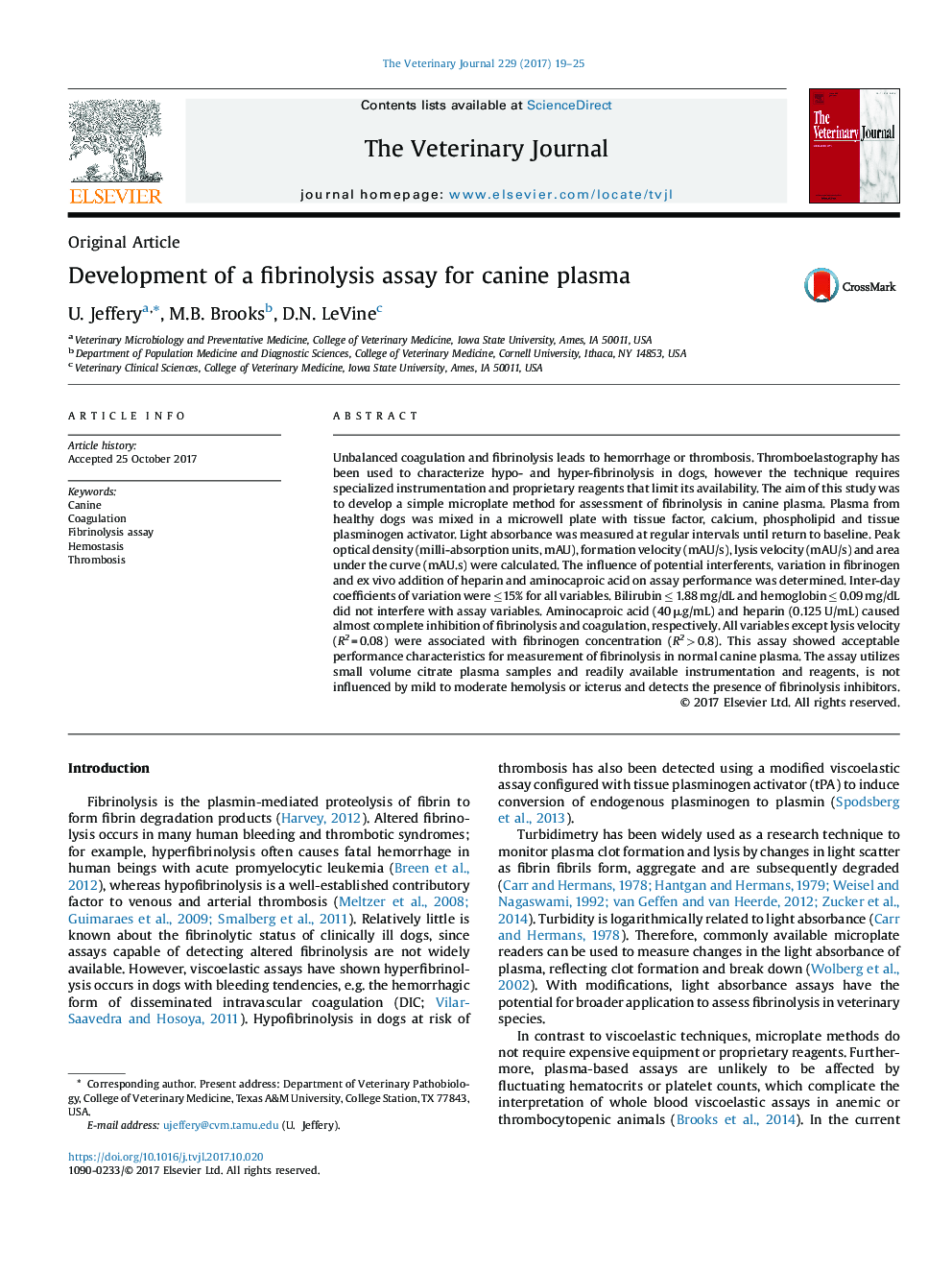| Article ID | Journal | Published Year | Pages | File Type |
|---|---|---|---|---|
| 8505032 | The Veterinary Journal | 2017 | 7 Pages |
Abstract
Unbalanced coagulation and fibrinolysis leads to hemorrhage or thrombosis. Thromboelastography has been used to characterize hypo- and hyper-fibrinolysis in dogs, however the technique requires specialized instrumentation and proprietary reagents that limit its availability. The aim of this study was to develop a simple microplate method for assessment of fibrinolysis in canine plasma. Plasma from healthy dogs was mixed in a microwell plate with tissue factor, calcium, phospholipid and tissue plasminogen activator. Light absorbance was measured at regular intervals until return to baseline. Peak optical density (milli-absorption units, mAU), formation velocity (mAU/s), lysis velocity (mAU/s) and area under the curve (mAU.s) were calculated. The influence of potential interferents, variation in fibrinogen and ex vivo addition of heparin and aminocaproic acid on assay performance was determined. Inter-day coefficients of variation were â¤15% for all variables. Bilirubin â¤Â 1.88 mg/dL and hemoglobin â¤Â 0.09 mg/dL did not interfere with assay variables. Aminocaproic acid (40 μg/mL) and heparin (0.125 U/mL) caused almost complete inhibition of fibrinolysis and coagulation, respectively. All variables except lysis velocity (R2 = 0.08) were associated with fibrinogen concentration (R2 > 0.8). This assay showed acceptable performance characteristics for measurement of fibrinolysis in normal canine plasma. The assay utilizes small volume citrate plasma samples and readily available instrumentation and reagents, is not influenced by mild to moderate hemolysis or icterus and detects the presence of fibrinolysis inhibitors.
Related Topics
Life Sciences
Agricultural and Biological Sciences
Animal Science and Zoology
Authors
U. Jeffery, M.B. Brooks, D.N. LeVine,
